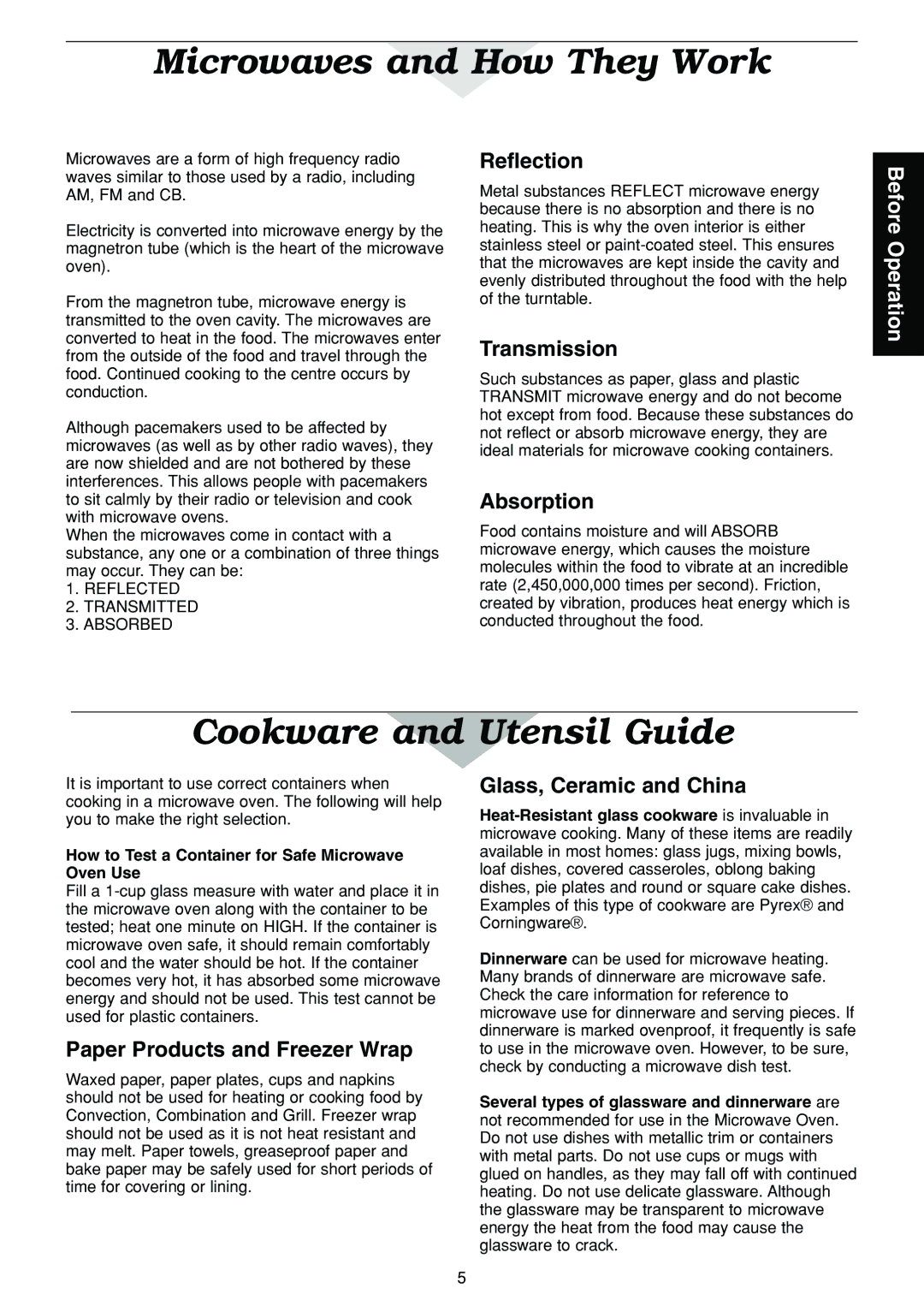
Microwaves and How They Work
Microwaves are a form of high frequency radio waves similar to those used by a radio, including AM, FM and CB.
Electricity is converted into microwave energy by the magnetron tube (which is the heart of the microwave oven).
From the magnetron tube, microwave energy is transmitted to the oven cavity. The microwaves are converted to heat in the food. The microwaves enter from the outside of the food and travel through the food. Continued cooking to the centre occurs by conduction.
Although pacemakers used to be affected by microwaves (as well as by other radio waves), they are now shielded and are not bothered by these interferences. This allows people with pacemakers to sit calmly by their radio or television and cook with microwave ovens.
When the microwaves come in contact with a substance, any one or a combination of three things may occur. They can be:
1.REFLECTED
2.TRANSMITTED
3.ABSORBED
Reflection
Metal substances REFLECT microwave energy because there is no absorption and there is no heating. This is why the oven interior is either stainless steel or
Transmission
Such substances as paper, glass and plastic TRANSMIT microwave energy and do not become hot except from food. Because these substances do not reflect or absorb microwave energy, they are ideal materials for microwave cooking containers.
Absorption
Food contains moisture and will ABSORB microwave energy, which causes the moisture molecules within the food to vibrate at an incredible rate (2,450,000,000 times per second). Friction, created by vibration, produces heat energy which is conducted throughout the food.
Before Operation
Cookware and Utensil Guide
It is important to use correct containers when cooking in a microwave oven. The following will help you to make the right selection.
How to Test a Container for Safe Microwave Oven Use
Fill a
Paper Products and Freezer Wrap
Waxed paper, paper plates, cups and napkins should not be used for heating or cooking food by Convection, Combination and Grill. Freezer wrap should not be used as it is not heat resistant and may melt. Paper towels, greaseproof paper and bake paper may be safely used for short periods of time for covering or lining.
Glass, Ceramic and China
Dinnerware can be used for microwave heating. Many brands of dinnerware are microwave safe. Check the care information for reference to microwave use for dinnerware and serving pieces. If dinnerware is marked ovenproof, it frequently is safe to use in the microwave oven. However, to be sure, check by conducting a microwave dish test.
Several types of glassware and dinnerware are not recommended for use in the Microwave Oven. Do not use dishes with metallic trim or containers with metal parts. Do not use cups or mugs with glued on handles, as they may fall off with continued heating. Do not use delicate glassware. Although the glassware may be transparent to microwave energy the heat from the food may cause the glassware to crack.
5
